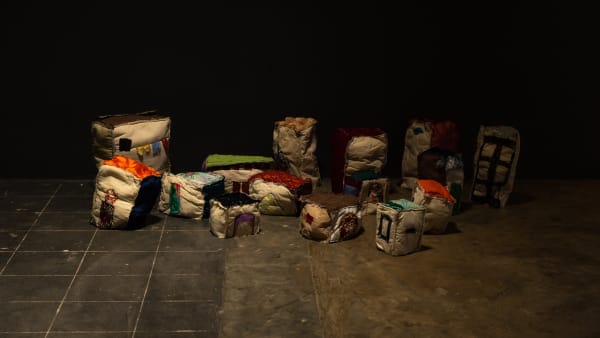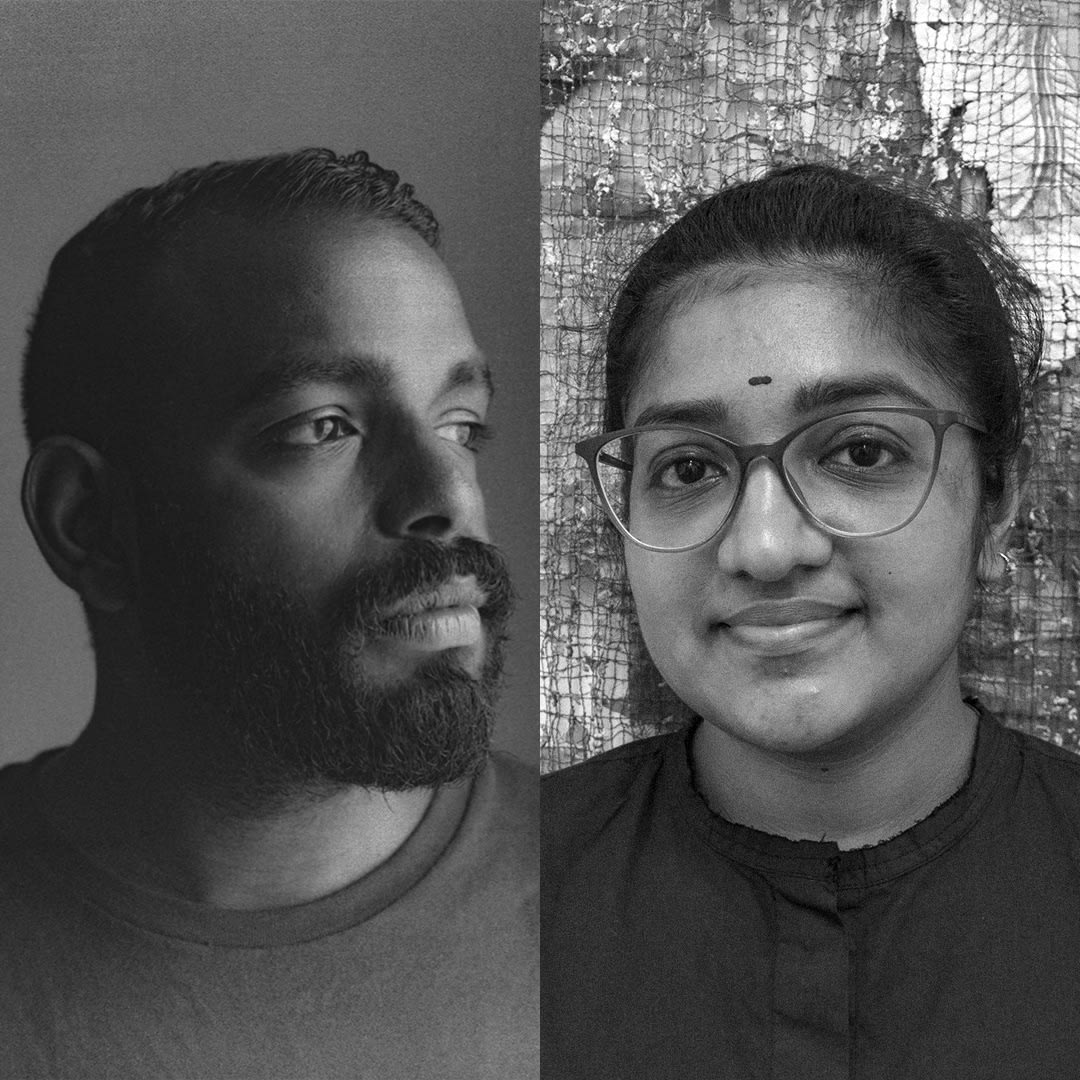Rented Shadow and Neighbours: Hema Shironi
Hema Shironi's debut showcase at the Saskia Fernando Gallery presents a body of work that delves into the artist’s complex understanding of migration, displacement, and identity. In Rented Shadows and Neighbours, Hema explores her community’s historical and lived experience of colonization and civil war. As a child, her family often moved from one place to another and she eventually found herself questioning the bonds that communities and individuals make. This questioning was driven by the difficulty of answering what it truly meant to belong somewhere. Hema’s wide-ranging artistic practice combines embroidery, mythological imagery, bricolage, and installation, to name but a few instances of a keen inquiry into cultural identity.
A notable element underpinning much of Hema’s work is a gridded structure that permeates her compositions. Appearing as threads and partitions, they often contain the sculptures and installations of her interdisciplinary work. In Erasing Flag and Mended Fences, this method of working touches on the grand narratives of history, mythology, and religion. National flags and religious imagery are dissected to reveal not just similar structural principles but the uncertainties that bring them together in the first place. In addition to this, her use of cartography reveals the trauma that remains embedded in the landscapes of the North. The use of red-colored thread has the distinct effect of suggesting collective trauma and violent memories. Hema’s maps are the veins and capillaries that carry blood throughout the body of her work, along the many roads that hold the memories of its maker. This anatomical connection between body and landscape is positioned deep within Rented Shadows and Knowing and Unknowing Memories; the latter beinga photographic installation of everyday meals and snacks replaced with an embroidered selection of maps, one of which reads: Kilinochchi, the heart and peace of hope. Here, in the presence of the sneaking blood-red string that occupies portions of the other maps, the artist reveals a convoluted desire for reunification of mind and soul, land and body.
The symbolism of blood is a recurring point of reference in Hema’s work as it features so consistently in the history of the land. In Window Scape, a red landscape appears behind the everyday sight of clothes hanging out to dry. The nature of domestic life is presented as a vault of memories in Buried Alive Stories, where household objects are transformed in the aftermath of a destructive event. These bloodied threads draw together the omnipresence of wartime trauma which reaches out and transforms everything it comes into contact with. The sacred nature of religion also does not go untouched as all communities suffered from the aftermath of the Easter Sunday attacks. Hema explores the destruction of innocence and generational displacement in Religious Family, a triptych that also signifies rootedness and connection. The artwork is a photographic series of childhood portraits in a church setting, covered by a partitioned grid. The silhouettes of each saint are featured as embroideries of falling statues. She proceeds to counter this disturbing narrative with Blasting Gift, a composition in the form of a regular consumer package, a form to be unpacked, that juxtaposes the original state of a bombed church site with images of Muslims deep in worship, facing each image of the church. Here she underlines the hard fact of spiritual practice being at the core of all religions, regardless of scripture and deity.
Hema states that her practice focuses on the human and universal aspects of the conflict. Her work is driven by the nostalgia of the numerous places she has called home and how each community belonging to those places grapples with concerns of language, culture, memory, myth, gender, and equality. Sri Lanka is a vibrant country with a multitude of overlapping and cultural trajectories, where many languages, religions, and historical communities coexist. Rented Shadows and Neighbours sheds light on the obscure issues of identity that stem from historically marginalized communities in a visually layered narrative. The wide range of materials used in the collection reflects the cultural diversity experienced on Hema’s migratory routes. Sri Lanka is a place where hopes, dreams, desires, and delusions are enclosed in a country that continues to live on with the broken reality of the past.














